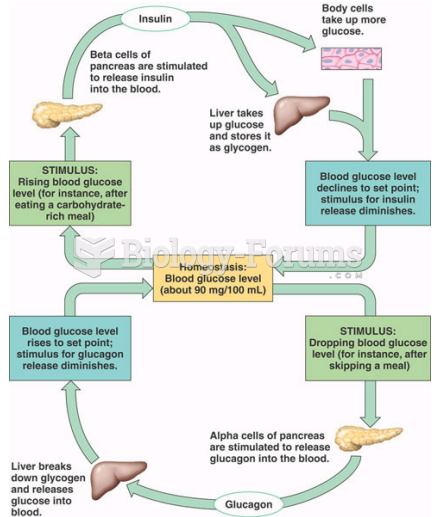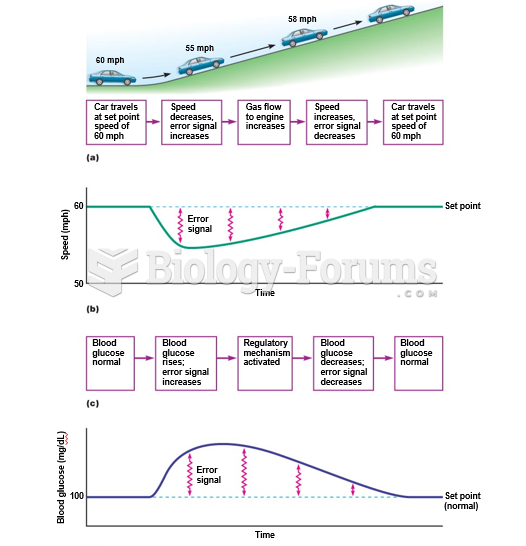|
|
|
Side effects from substance abuse include nausea, dehydration, reduced productivitiy, and dependence. Though these effects usually worsen over time, the constant need for the substance often overcomes rational thinking.
After 5 years of being diagnosed with rheumatoid arthritis, one every three patients will no longer be able to work.
IgA antibodies protect body surfaces exposed to outside foreign substances. IgG antibodies are found in all body fluids. IgM antibodies are the first type of antibody made in response to an infection. IgE antibody levels are often high in people with allergies. IgD antibodies are found in tissues lining the abdomen and chest.
This year, an estimated 1.4 million Americans will have a new or recurrent heart attack.
About 100 new prescription or over-the-counter drugs come into the U.S. market every year.







